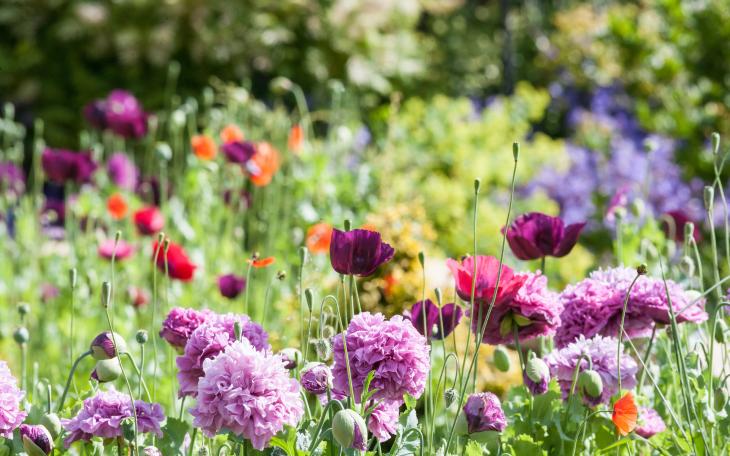Green creds and flood resilience at the Chelsea Flower Show 2024

There is plenty for the eco-conscious gardener to get stuck in to at the Chelsea Flower Show 2024 - and you don’t have to be ‘The King of Compost’ (as HRH King Charles III was crowned at the opening ceremony) to apply some of these green tips to your own plant kingdom.
This year the Royal Horticultural Society (RHS) made a particular effort to reduce its embodied carbon (all the CO2 emitted in the production of the event which features 35 themed gardens), in an attempt to address the criticism of recent years that it’s not very sustainable. Concerns include the use of non-native and unseasonal plants, the high volume of waste and its overall carbon footprint.
The RHS introduced a green audit for all large gardens this year and scrutinised proposals on topics such as water usage, waste and materials. All gardens are required to spell out their ‘key sustainability points’ – such as use of reclaimed and cement-free materials, rainwater harvesting systems, climate-resilient varieties and promoting biodiversity. The result is a 20% reduction in the show’s carbon footprint and an abundance of know-how that can be transferred to domestic gardens.
Water management is a recurring theme this year – particularly flood resilience and water conservation – as summer drought warnings become more common, while winters get wetter and extreme weather events can happen any time of year.
My favourite this year was the WaterAid Garden, designed by Tom Massey and Je Ahn, which features an undulating rain harvesting pavilion resembling a fairy ring. As well as catching water, it slows, filters and stores it. I wonder which lucky park or school will inherit this when the show’s over – all exhibits are required to have ‘second life’ plan these days.
More practical for the domestic gardener is the very relatable ‘Flood Resilient Garden’ by Naomi Slade and Dr Ed Barsley. There are no-nonsense tank water features and soakaways to help reduce flooding risk and to recover quickly after periods of heavy rainfall and a clever configuration of reclaimed logs and bog plants. It’s very pretty but I fear it would turn my east London backyard into a mosquito coast when the floods subside and the sun comes out.
The wider point is that the UK’s gardens can, and should, play an important role in boosting biodiversity, managing water and creating pockets of wildlife havens across our towns and cities. They cover an area greater than all our national parks and are often an under-utilised natural resource. This year’s Chelsea is full of ideas for garden-owners looking to boost their green impact, so dig in!









